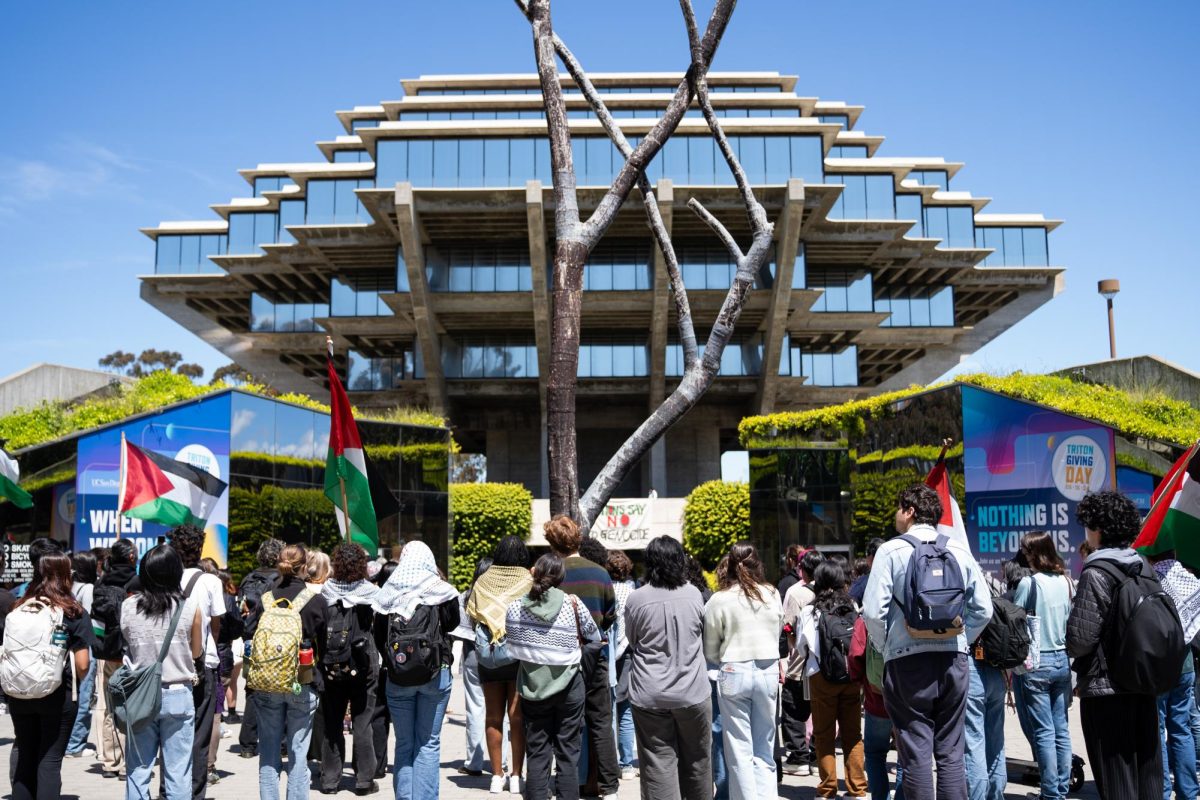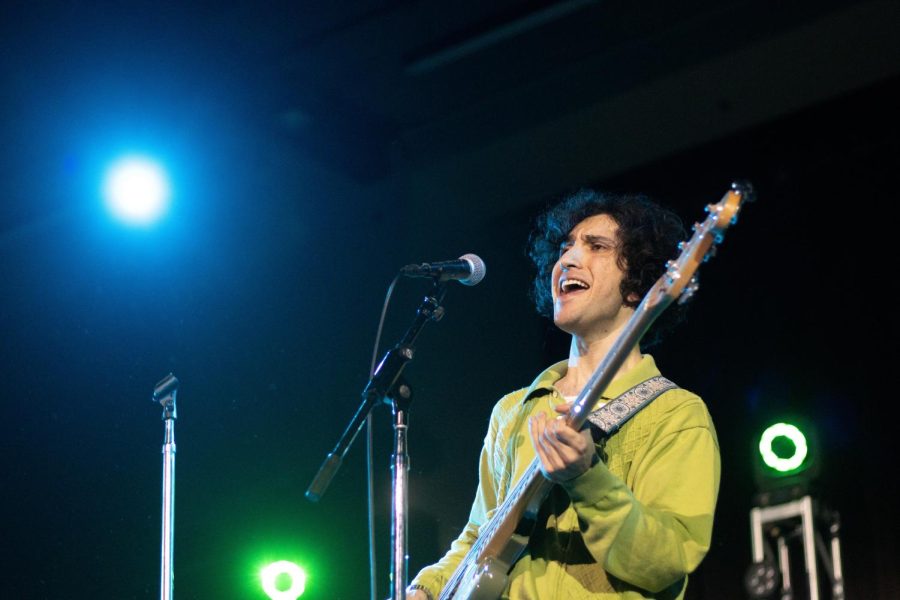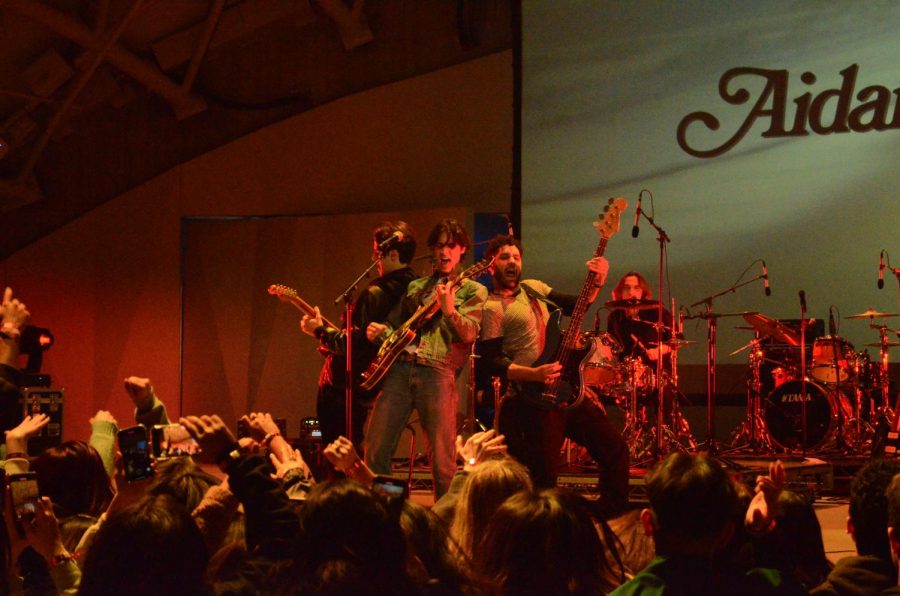Over the course of the past year, UCSD has begun to
disappear from the national radar.
From hats and T-shirts in the Price Center Bookstore to the
campus’ newly renovated Web site, “UC San Diego” is slowly replacing the
four-letter moniker on more than just merchandise. The subtle yet pointed
rebranding is not coincidental. This deliberate push by campus leaders to
market the university is one of many careful decisions delegated to the office
of university communications and public affairs, the men and women working
behind the curtain to shape the campus’ image in the public eye.
“There have been discussions for many years regarding what
UCSD should call itself,” said lead university spokeswoman Stacie A. Spector,
head of the communications office and UCSD’s official mouthpiece for most of
its important issues. “What we found over time is that the acronym UCSD does
not resonate much beyond San Diego, and locally is confused with a couple of
other prestigious institutions in the region, thereby losing opportunities for
UC San Diego to strengthen its reputation.”
Although the 48-year-old university has piled up accolades
for its research and academic rigor, Spector said graduates seeking to
capitalize on their name-brand degrees are more likely to benefit from a school
recognized throughout the nation — a change she hopes will accompany the
switch.
“We want to elevate the recognition of UC San Diego and its
reputation and work to create strong emotional connections to the university,”
she said. “We want our students, staff, faculty, alumni, parents, donors,
friends, supporters, neighbors and vendors to have that emotional response when
they see someone wearing a UC San Diego sweatshirt.”
The rebranding effort was undertaken by the UC San Diego
Marketing Council, an unofficial group of volunteers comprised of
administrators, staff members and students. Representatives from arenas like
the Scripps Institution of Oceanography, UCSD Transportation and Parking
Services, the bookstore and the Chancellor’s Organization of Allied Students
participate in brainstorming meetings where they provide input on what
promotional strategies have been or could be effective. The group also
contributes to campuswide initiatives designed to cultivate a sense of pride
and community, such as the UCSD Rocks Open House and the closing celebration
for “The Campaign for UCSD: Imagine What’s Next,” the seven-year fundraising
effort that made UCSD $1 billion richer.
“The rebranding from UCSD to UC San Diego has really given a
stronger, more distinct identity to our university,” said
alumna Lauren White, who served on the council during the 2006-07 school year
and now works for the UCSD Alumni Association. “I’ve heard UCSD mistaken for
USC, SDSU, UCSB, UCSC and USD. Now that we are known as UC San Diego, we will
stand out in a sea of other university names.”
White said the rebranding was part of a larger effort
designed to generate a sense of campus community, which is best summarized by
the “Eat, Shop, Play, Relax, Meet, Belong” motto of the Price Center East
addition.
“All the things that bring a community together are written
into the branding of PC East; it’s impossible for students to not feel a
different, more welcoming vibe,” she said.
While the communication office’s marketing tactics may
escape attention, its price tag is certainly more conspicuous: Almost $2.8
million is allocated yearly to Spector’s office, which oversees press
relations, marketing, strategic and electronic communications, tours and
special events and protocol. Approximately $2.3 million of the budget is
allocated annually to employee salaries, $237,000 to benefits and $264,000 to
general operating expenses.
These monies fund a number of public-relations initiatives,
including what Spector calls “new media,” which incorporates the use of video,
podcasting and social networking Web sites such as Facebook to sustain and
promote UCSD’s rapidly growing reputation. Her office is also targeting ethnic
media outlets like Spanish-language television station Univision and Voice and
Viewpoint, a local newspaper geared toward black readers. The combination of
these two efforts serves to increase the “overall diversity” of the campus, she
said.
“Our faculty experts have become so diverse that our
international and national outreach and media placement has increased
dramatically in the last four years,” Spector said, citing a recent research
breakthrough on quitting smoking that was covered by more than 708 worldwide
media outlets.
Much of the targeted publicity focuses on UCSD’s strong
background in the sciences, though Spector said press coverage of the campus’
arts and humanities, social sciences and graduate programs has been steadily
increasing over the last four years.
However, amplified media attention to such a large
university inevitably unearths a fair number of skeletons in administrators’
closets. UCSD has seen its share of these bad-press situations in the past
year, from grade-changing discrepancies at the
of the campus’ free-speech policy, alleged by some to be unconstitutional.
When these cases arise, the communications office
prioritizes transparency above all else, Spector said.
“The most important aspect of dealing with any issue is
openly presenting all the facts, and discussing the issue thoughtfully with
interested parties, including reporters,” she said. “When the leadership is
confronted with a situation that may be perceived negatively at first glance,
we work collectively to gather all the facts and develop a plan to present the
most accurate and current information without violating privacy or policy
regulations.”
Spector said administrators have demonstrated this
transparency through open press conferences and town-hall meetings with key
campus leaders, both after the discovery of damaging information — such as the
university audit that revealed administrative mismanagement at the Preuss
School — and situations in which the campus seeks to clear up rumors or reach
out to the student body, as with the upcoming U.S. Open golf tournament or the
wildfires that raged through the San Diego area last year.
Even when UCSD is not focused on damage control,
communications officials are consistently battling negative perceptions about
the campus on an individual basis, White said. She cited a common complaint
illuminated in the 2005 Undergraduate Student Experience and Satisfaction
report that UCSD lacks a well-developed social scene, countering that her
transition to the marketing arena made her more aware of options available for
students to maximize their undergraduate experiences.
“We are very academically focused, but that doesn’t mean
UCSD is ‘boring,’” White said. “You just have to make your own fun. Being on
the ‘other side’ has really changed my perspective about how important it is to
get involved as a student and to find that fun.”
UCSD is currently soliciting student responses for a 2008
update to the USES report, the results of which may indicate whether the
school’s image among its student body has since changed as a result of this
marketing overhaul.
In addition, White and Spector agreed that achieving support
from alumni is a primary objective for communications officials, both to
bolster UCSD’s reputation and procure donations to maintain the quality of campus
life. According to data released by the Alumni Association earlier this year,
alumni donations to the
over the last two years, following a 10-year upward trend, further emphasizing
the need for a positive campus image.
“Students today are
alumni tomorrow, and I want to make sure students are connected to the
university while they are here and stay connected after they leave,” White
said.
Despite the challenges inherent in maintaining a positive
national image, Spector said she believes the campus’ profile is consistently
improving.
“UC San Diego maintains a stellar academic reputation,” she
said. “This is validated by the fact that UCSD attracts the best and the
brightest students, top faculty experts in their fields, continues to be a
place where cutting-edge research is applied to find discoveries and solutions
to some of the world’s most challenging issues of global warming and health
care — and where innovation along with an entrepreneurial and collaborative
spirit is highly encouraged.”







